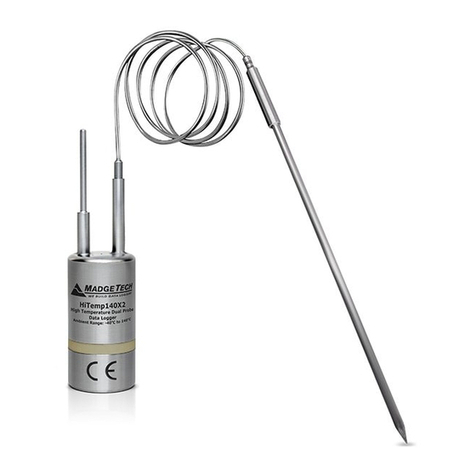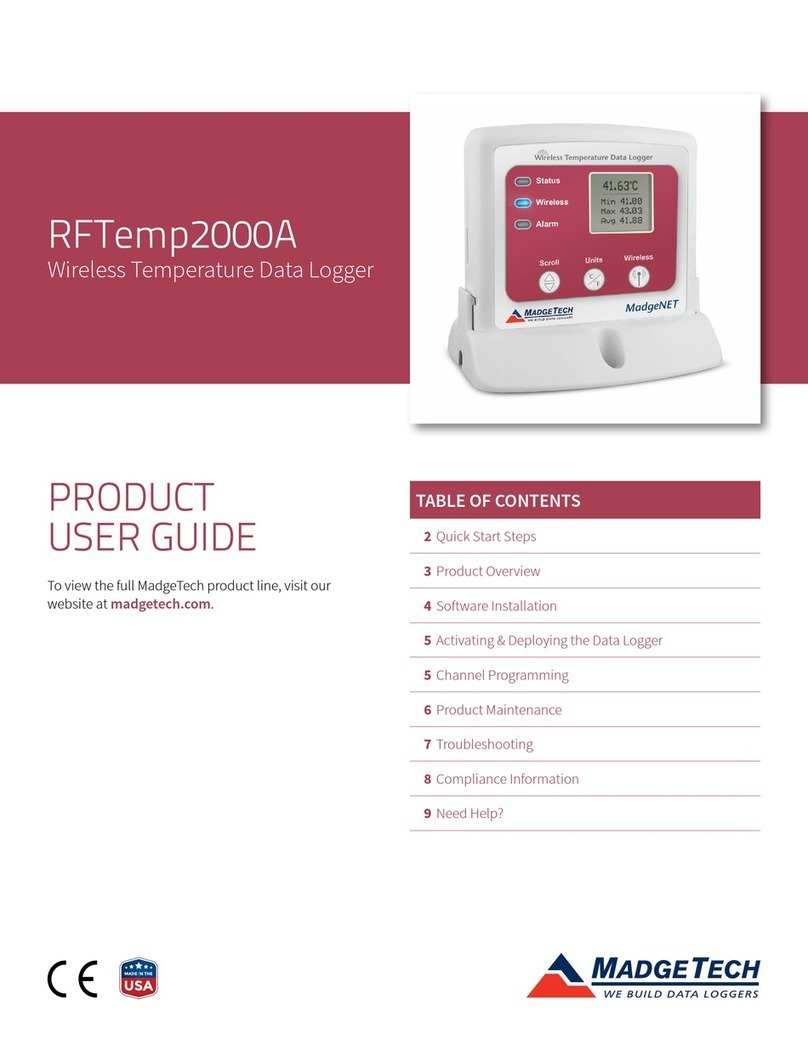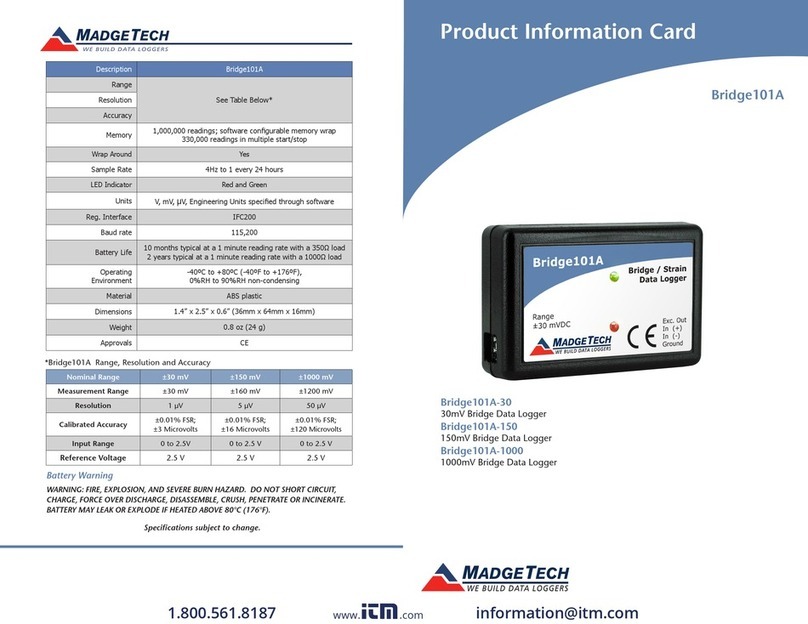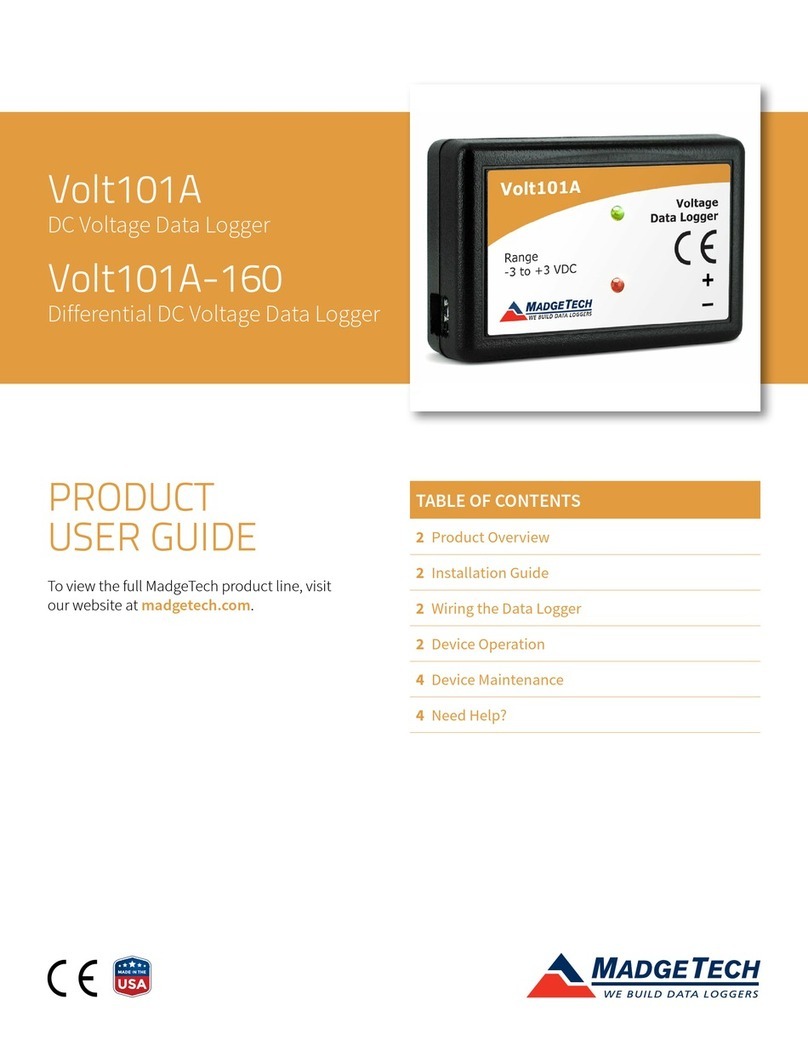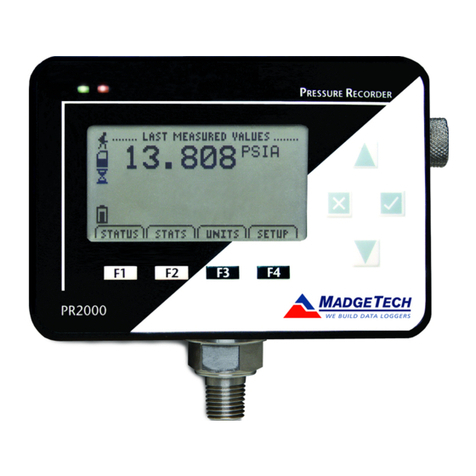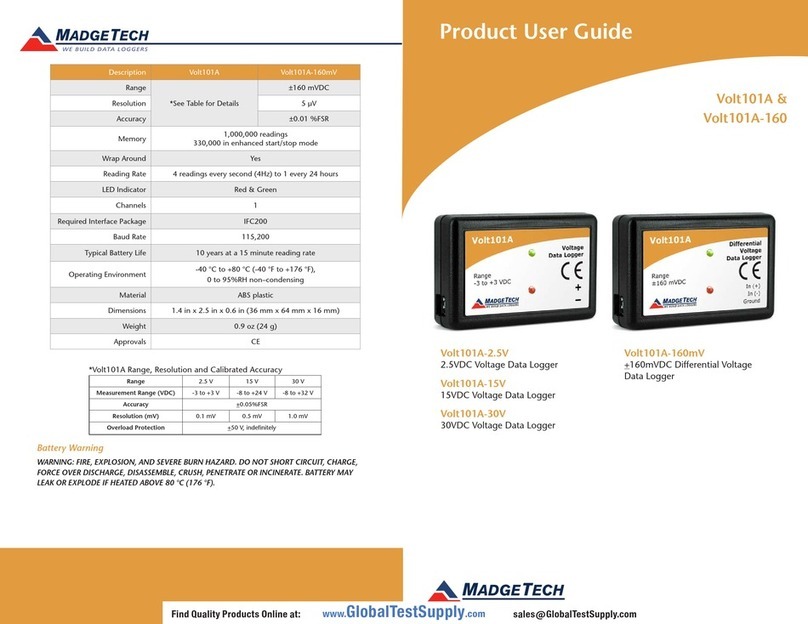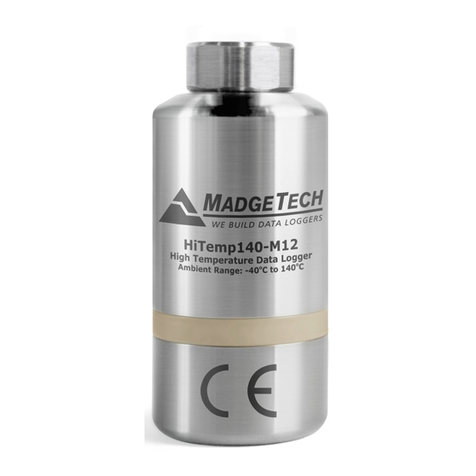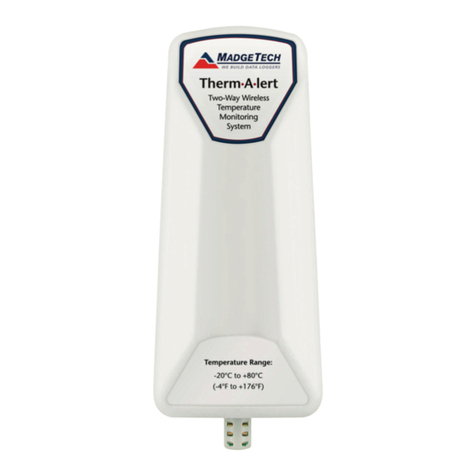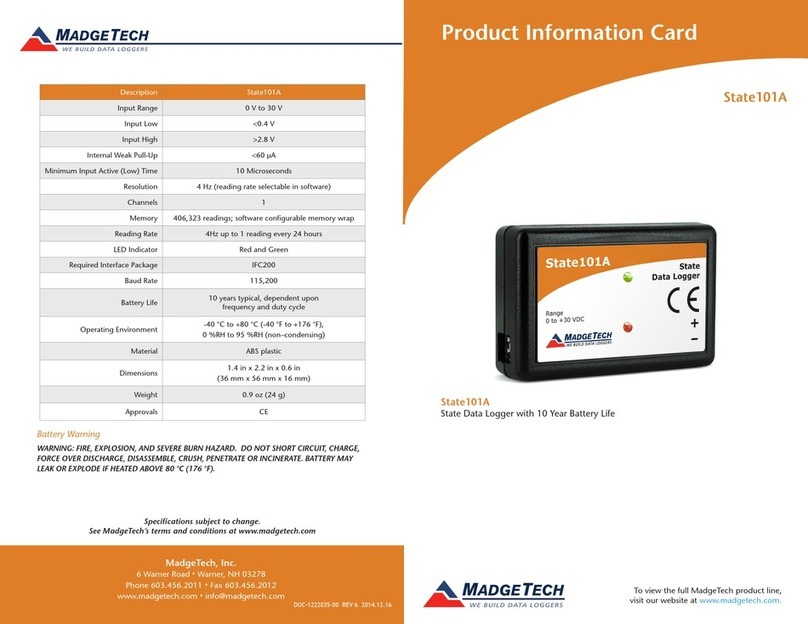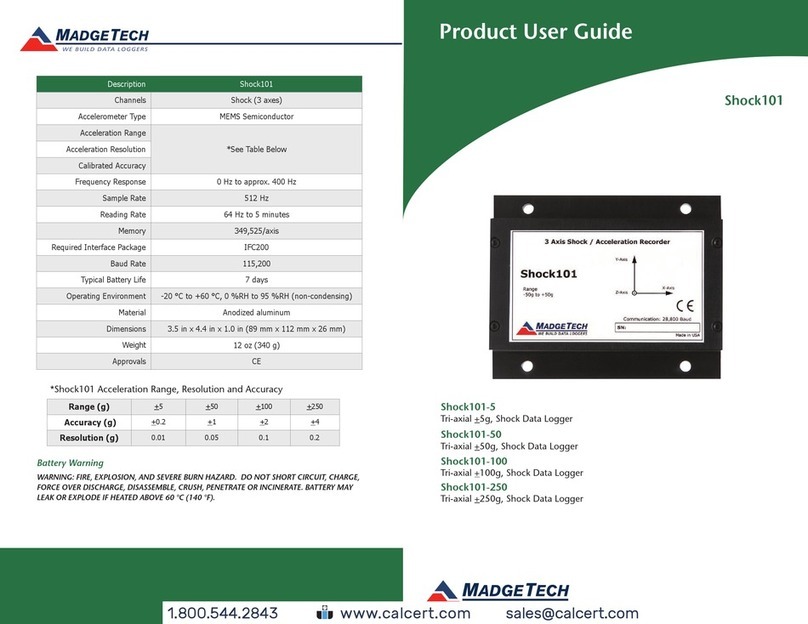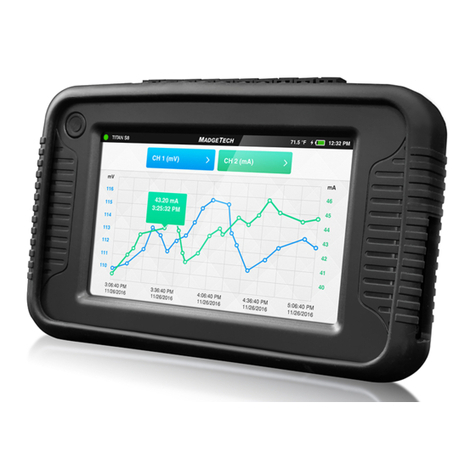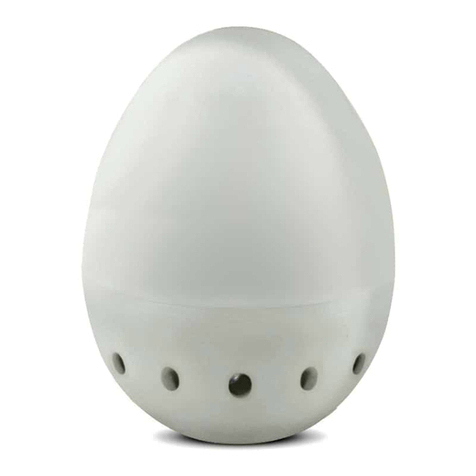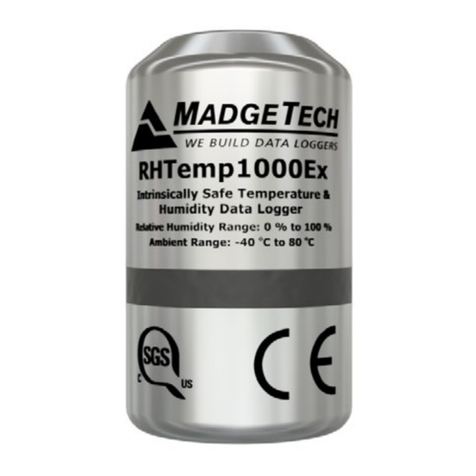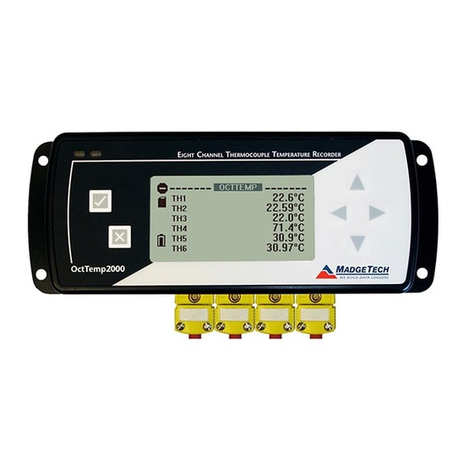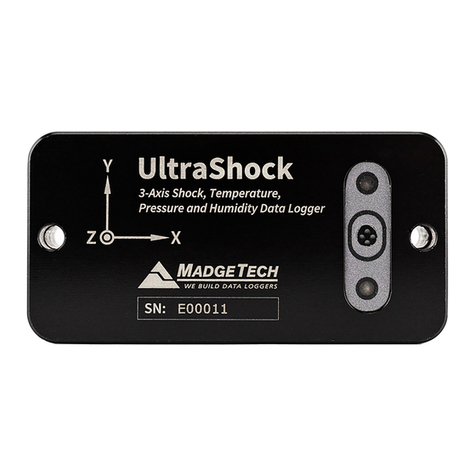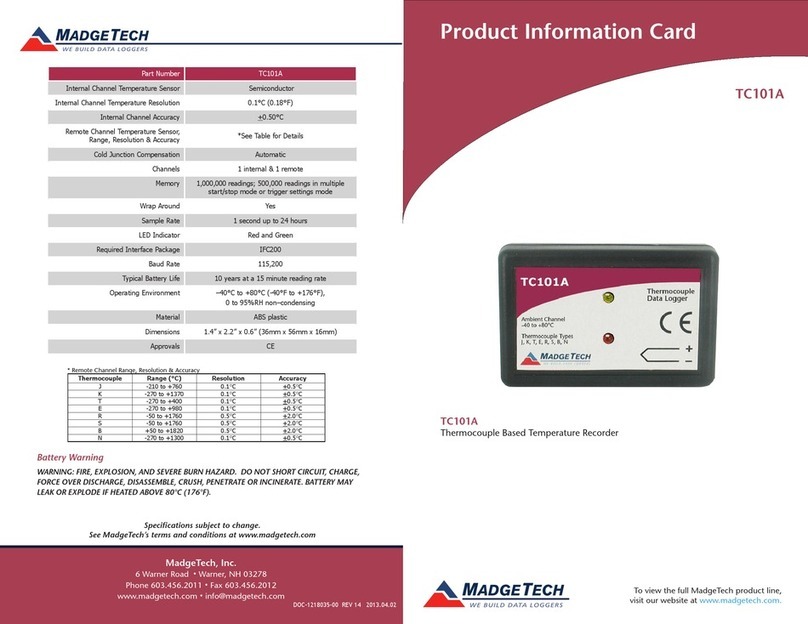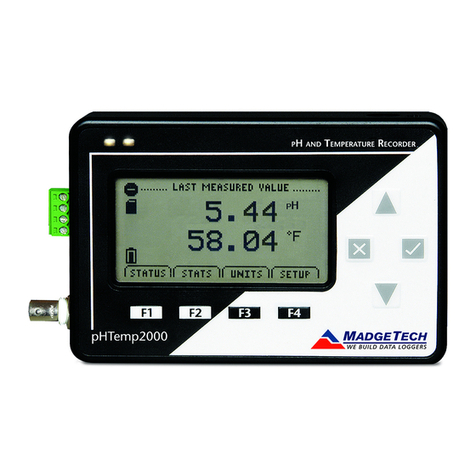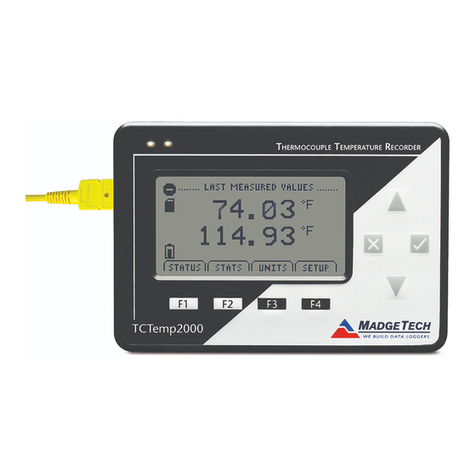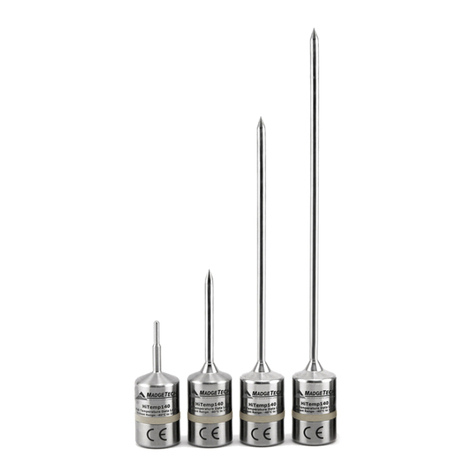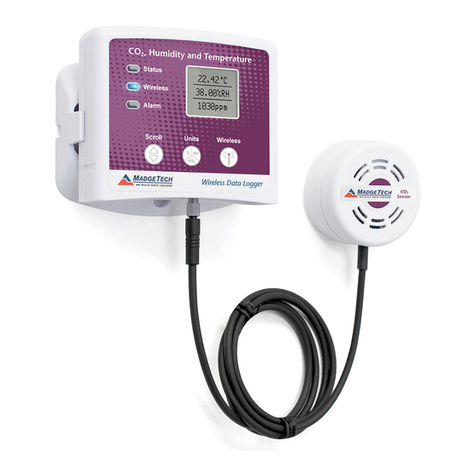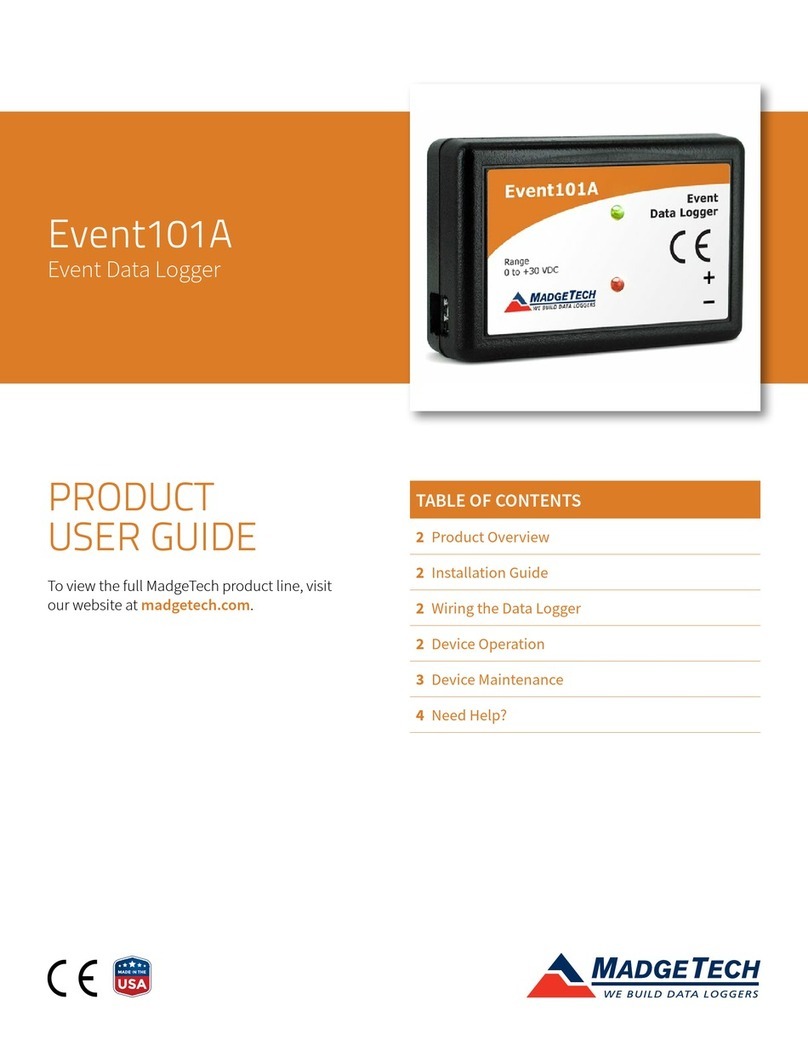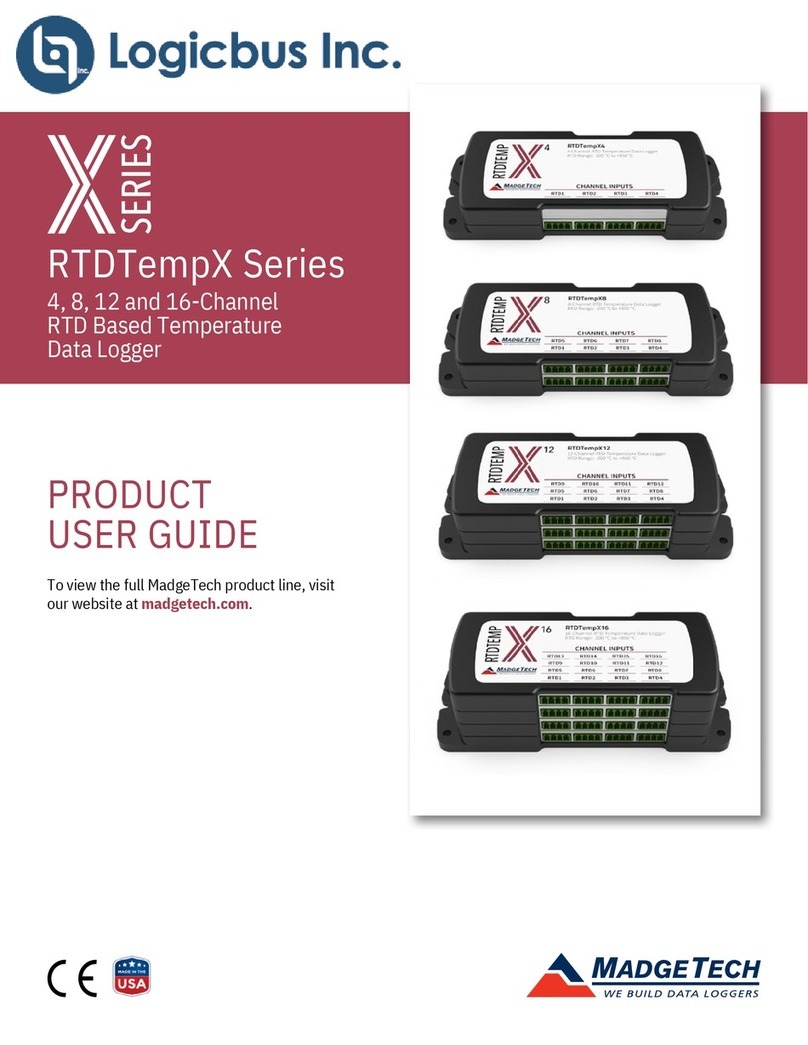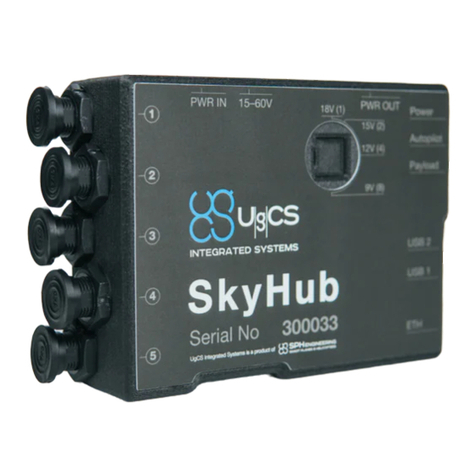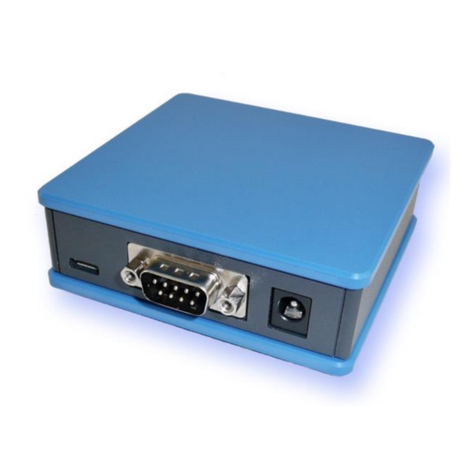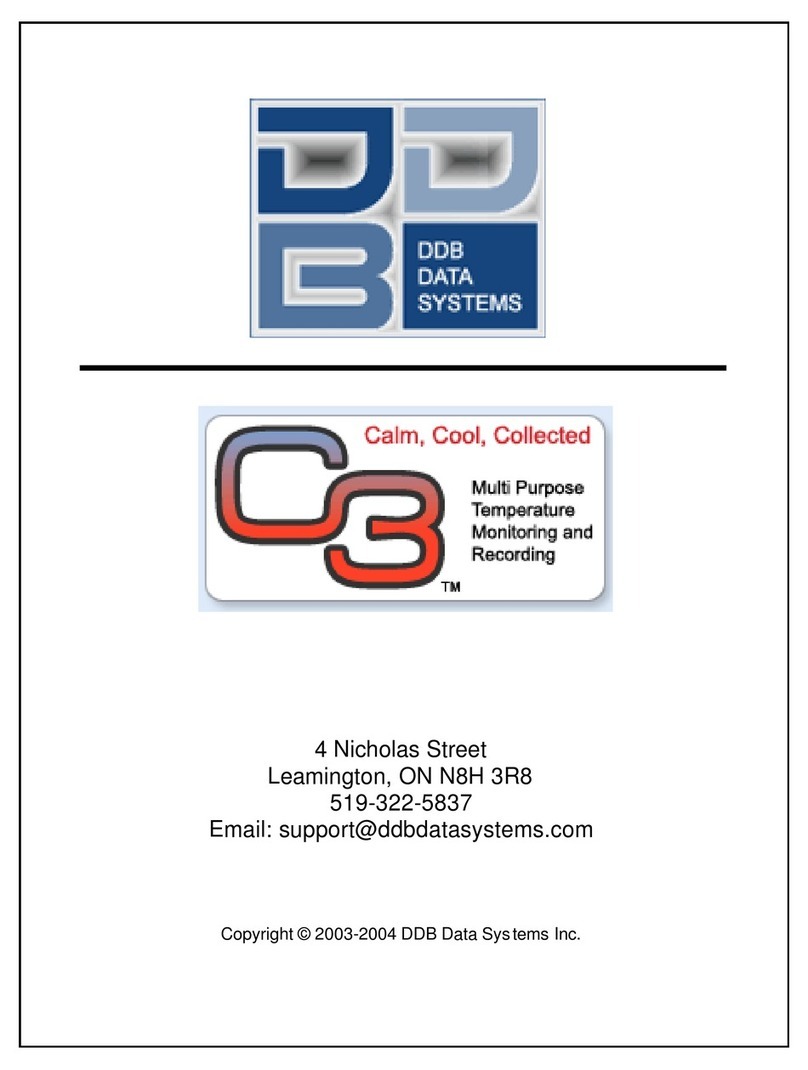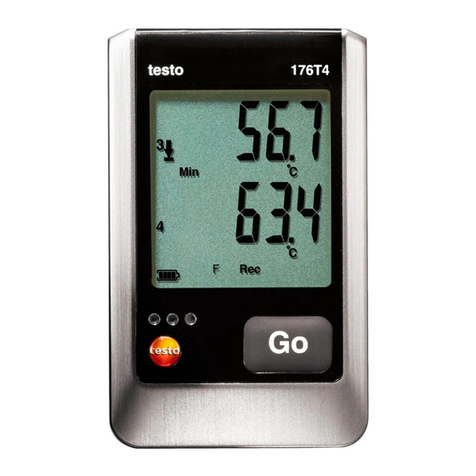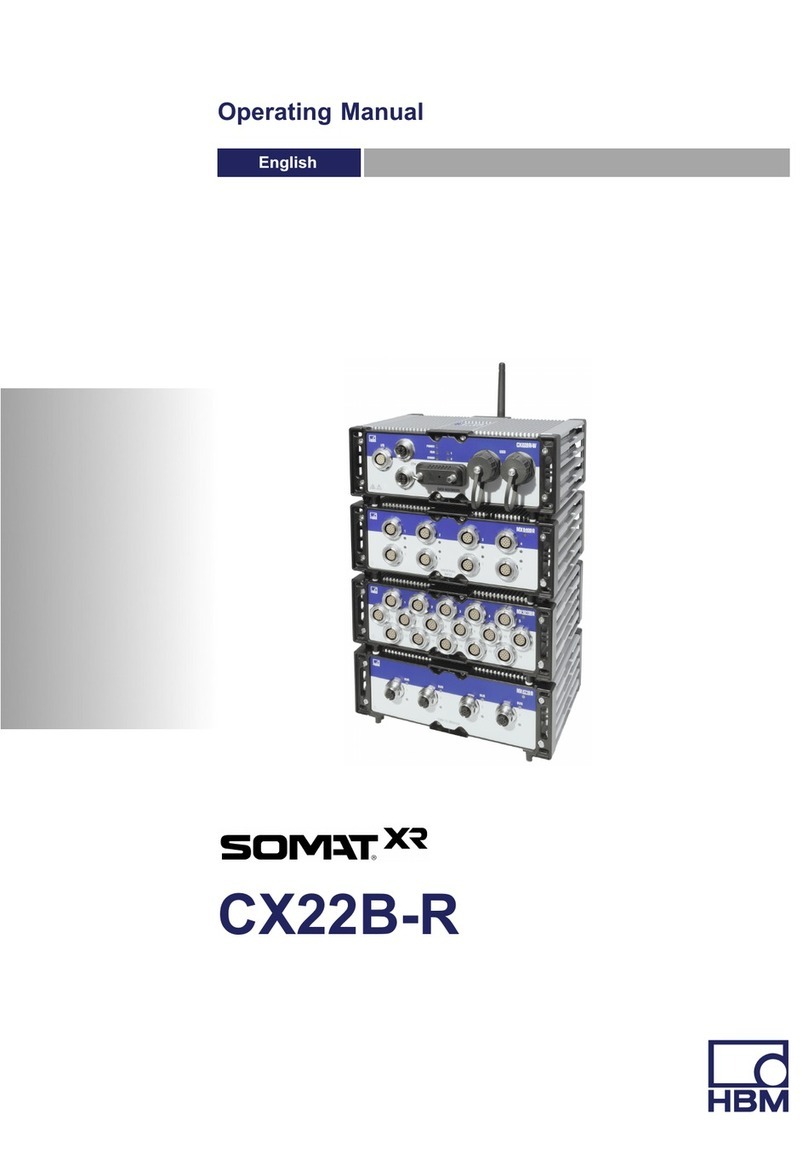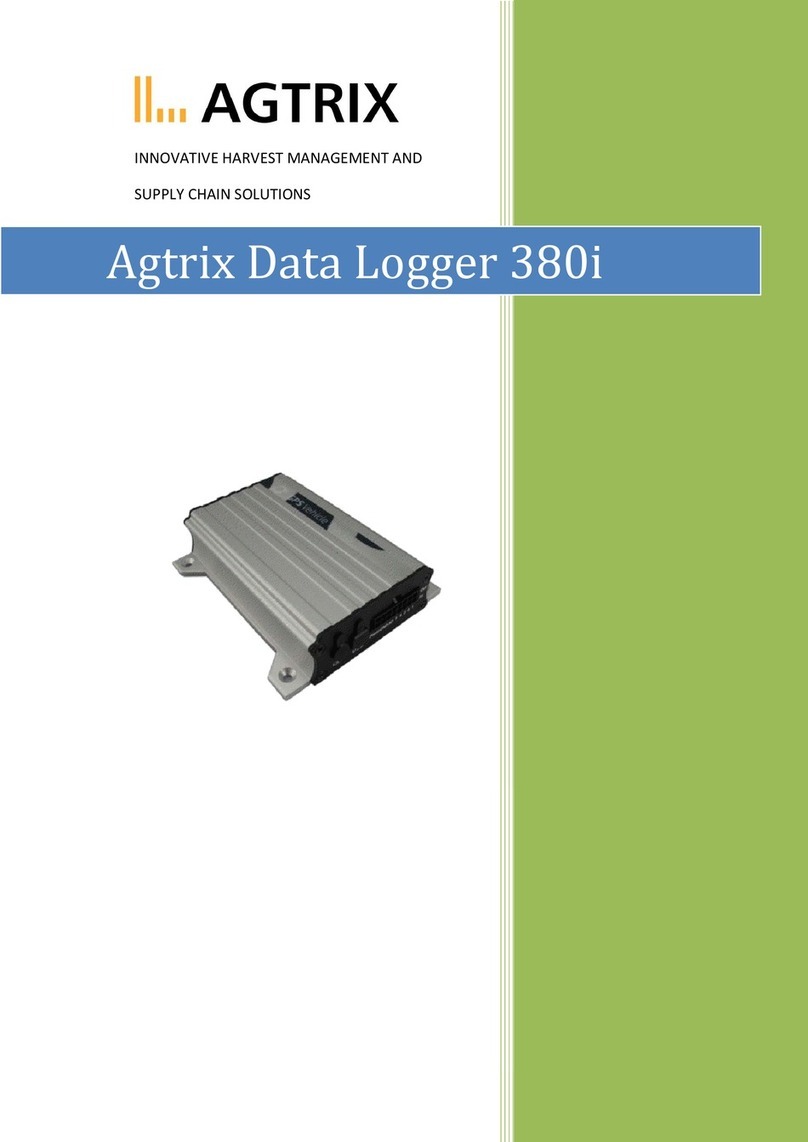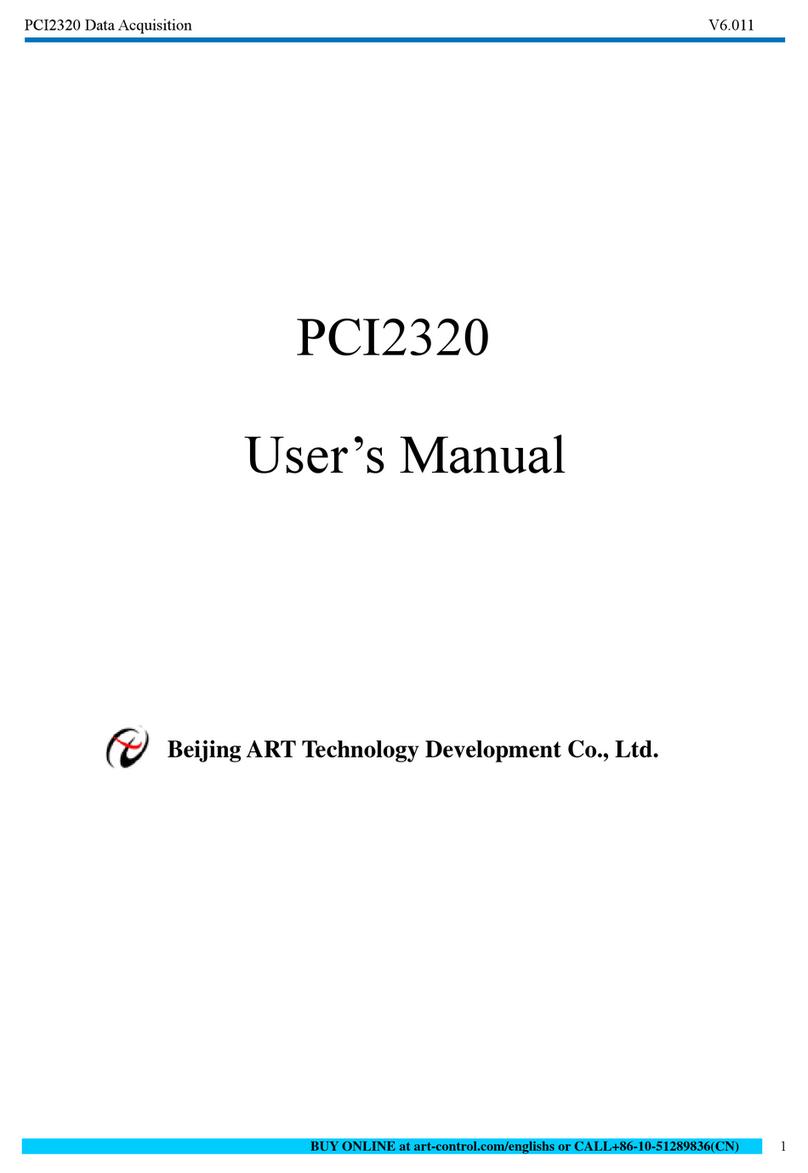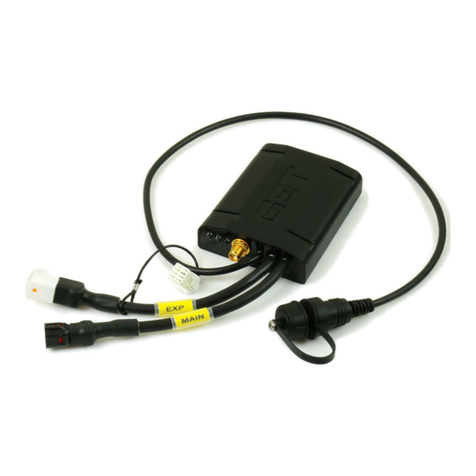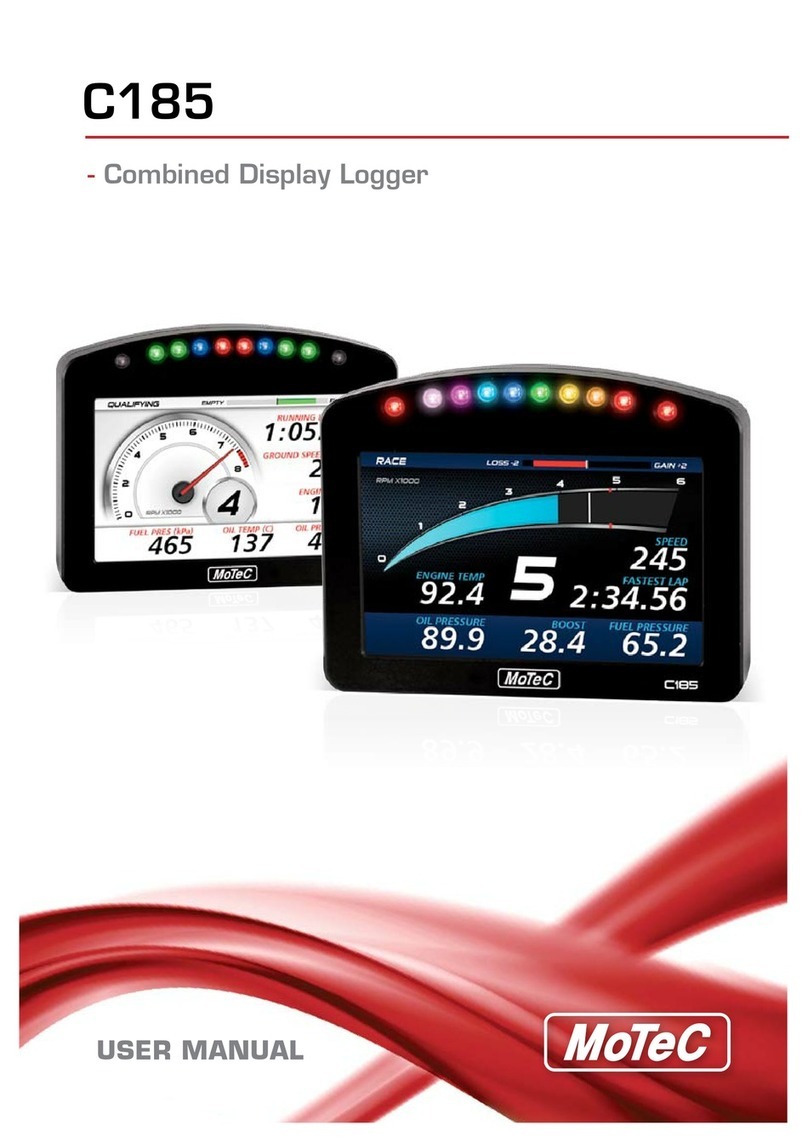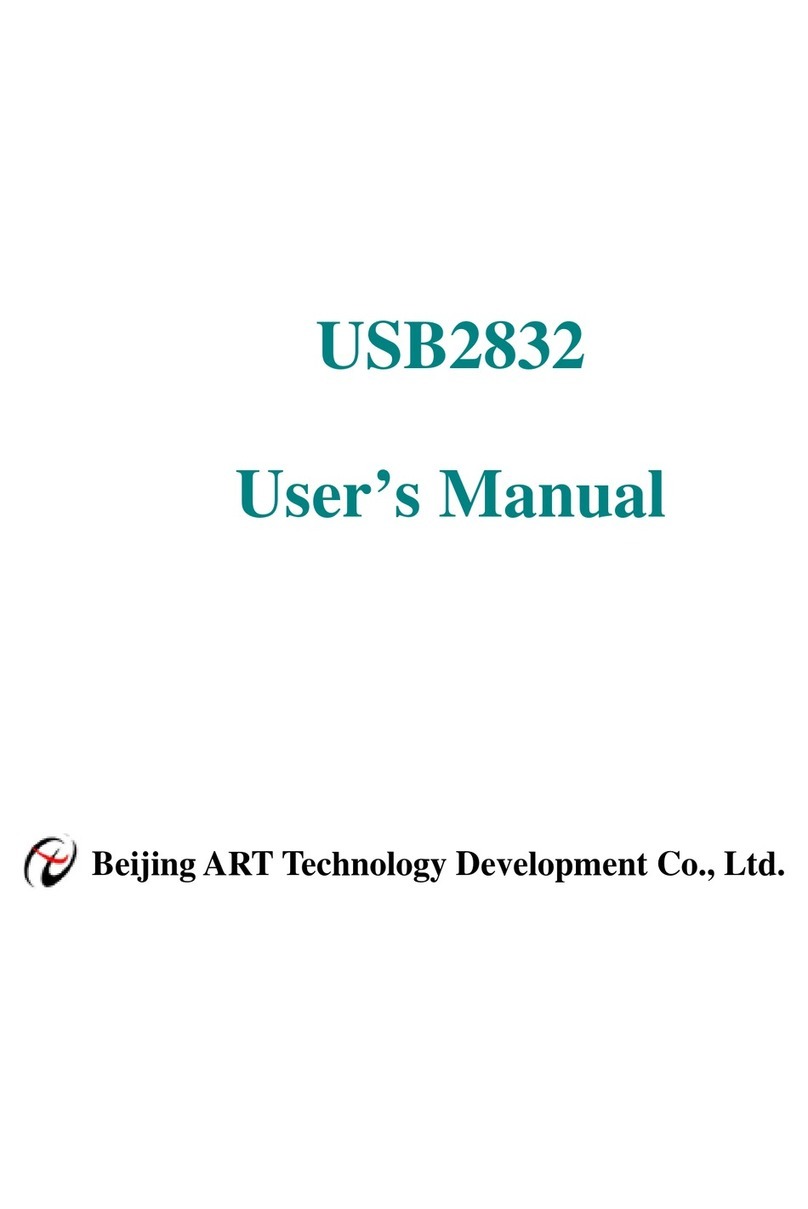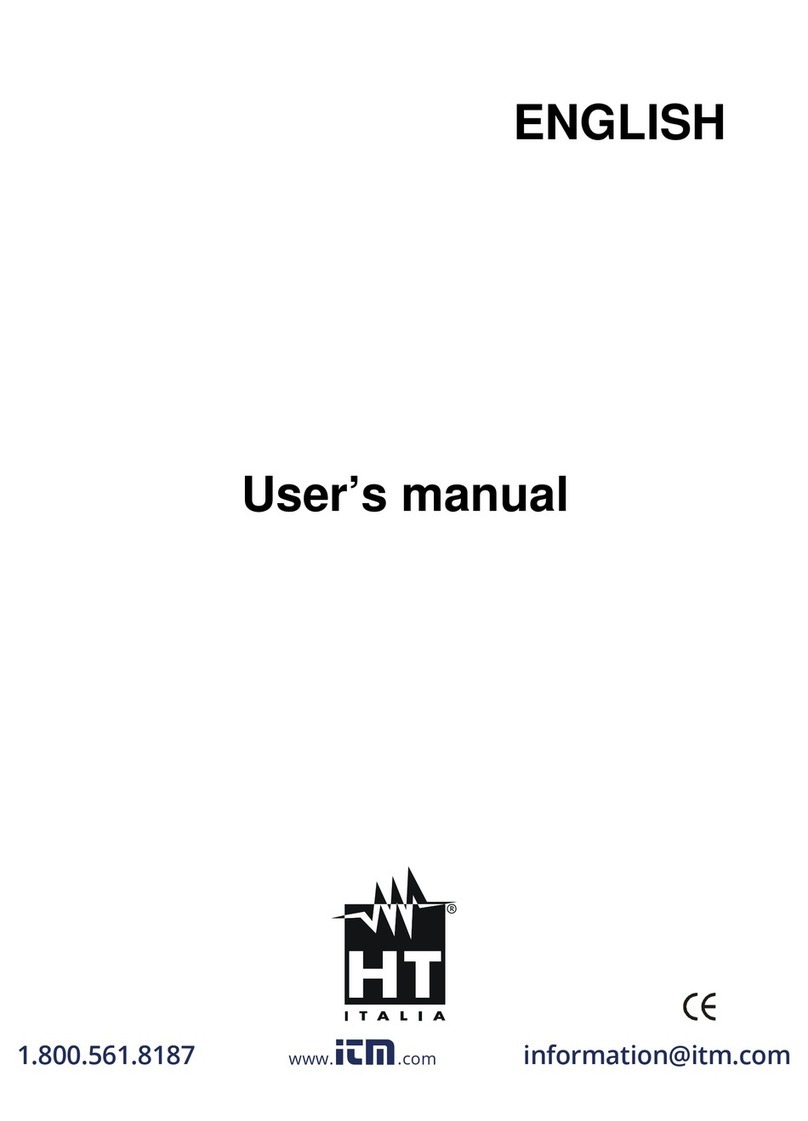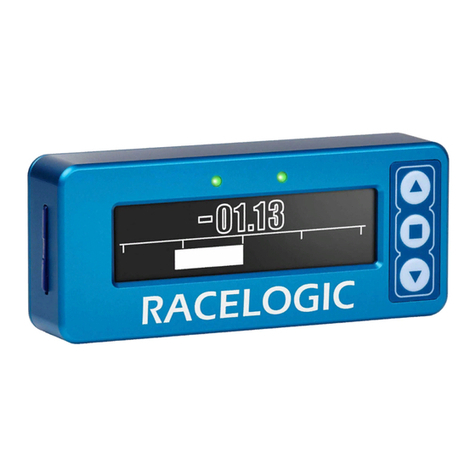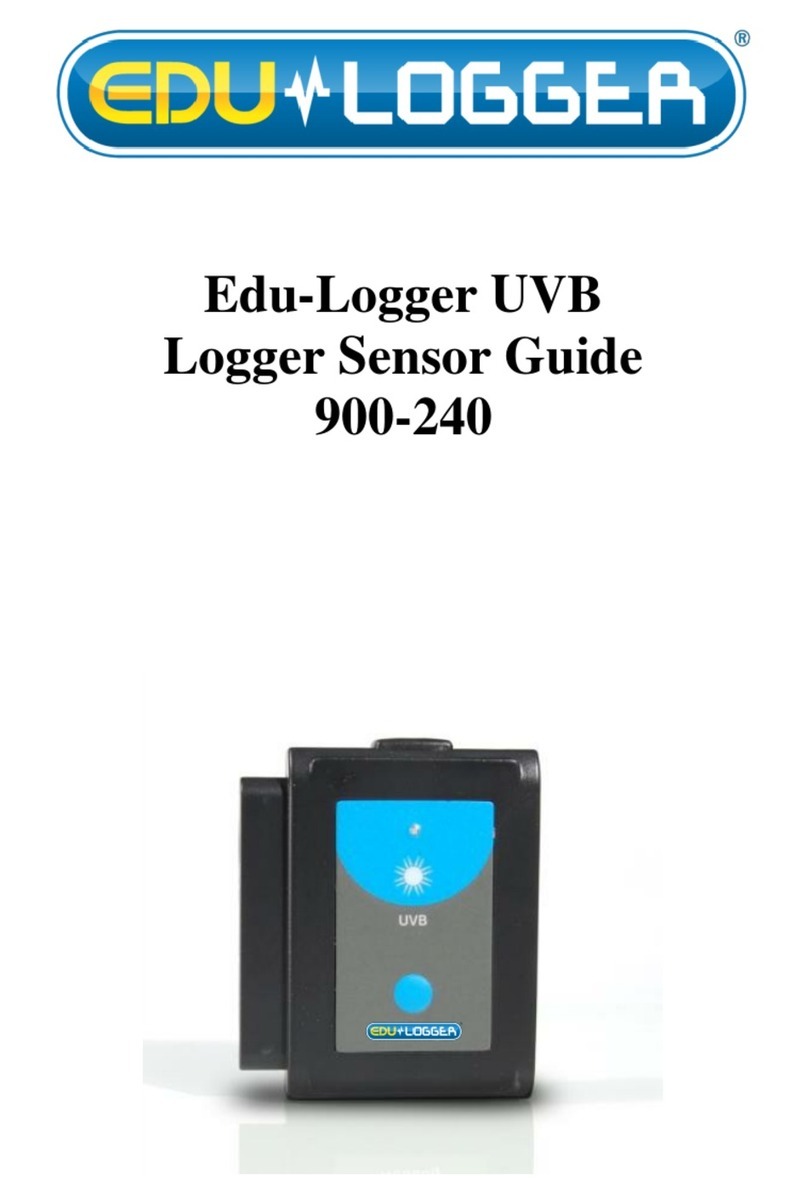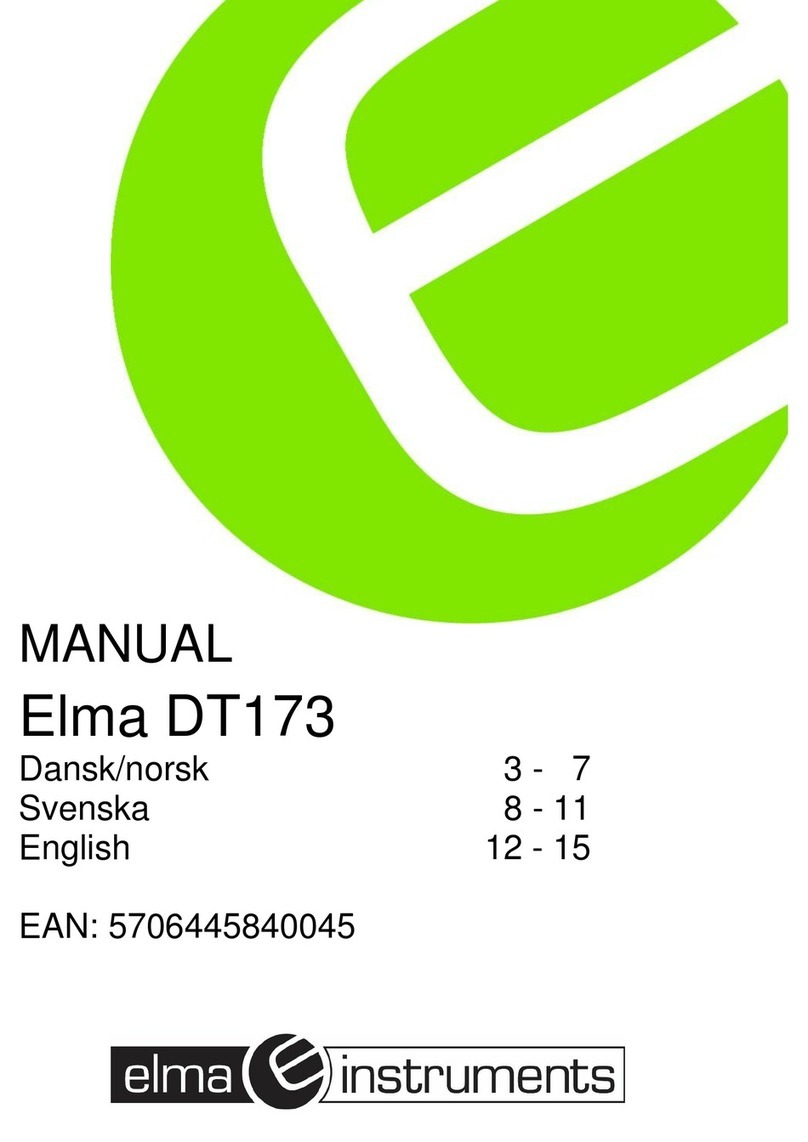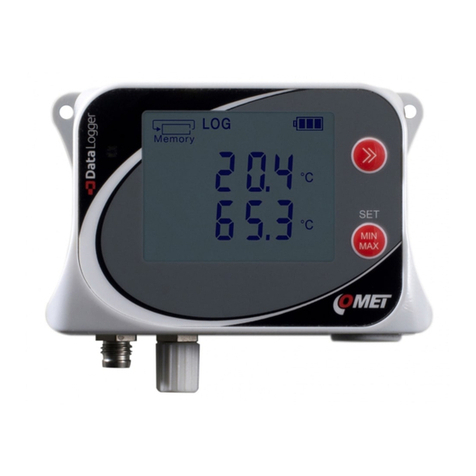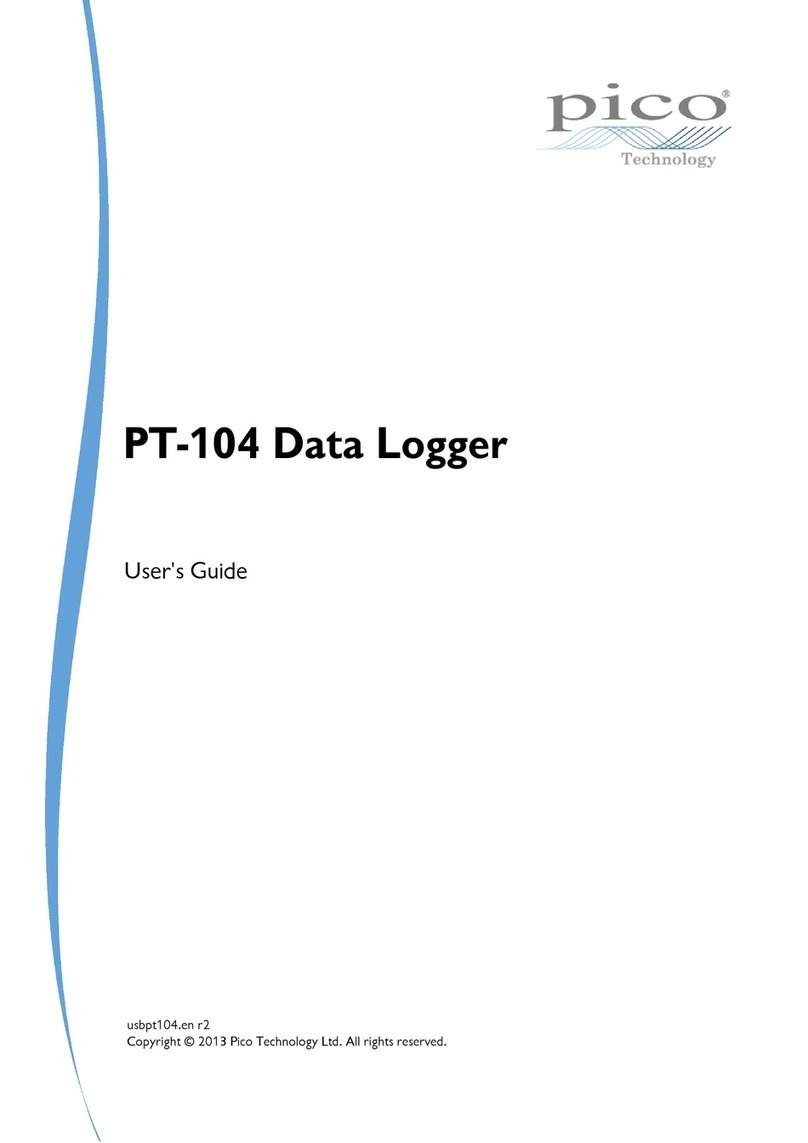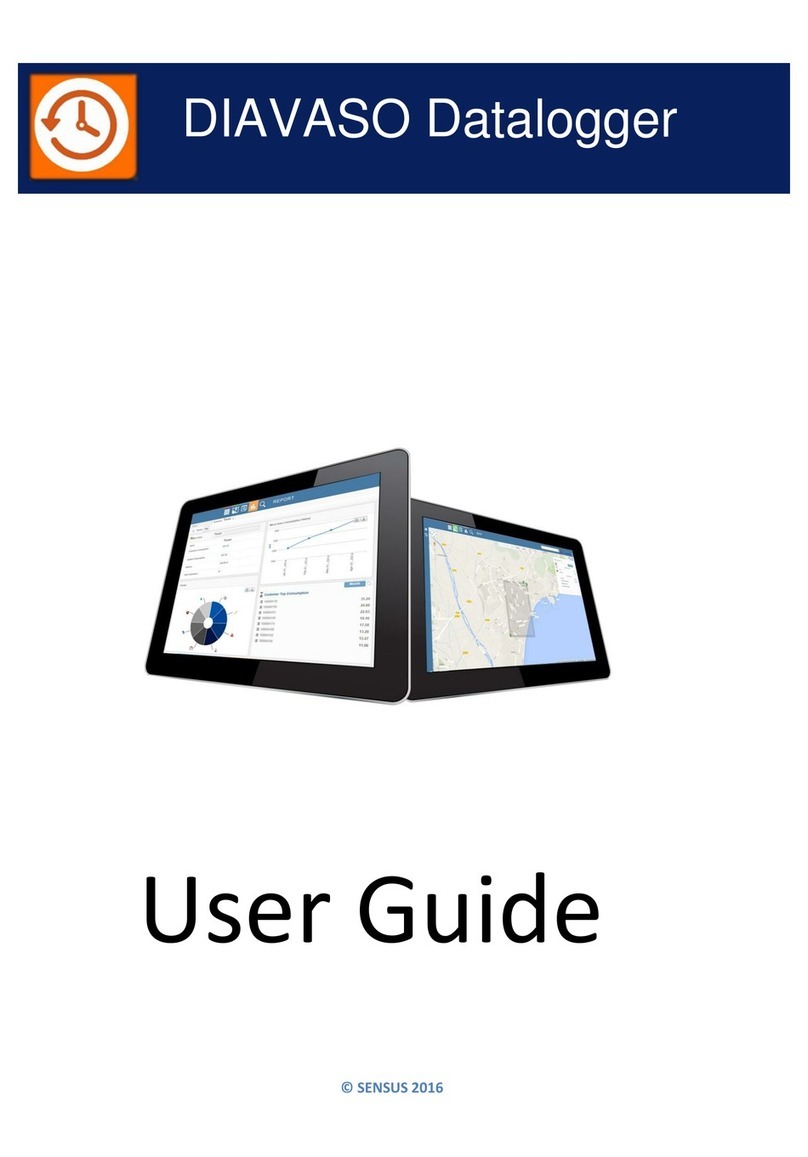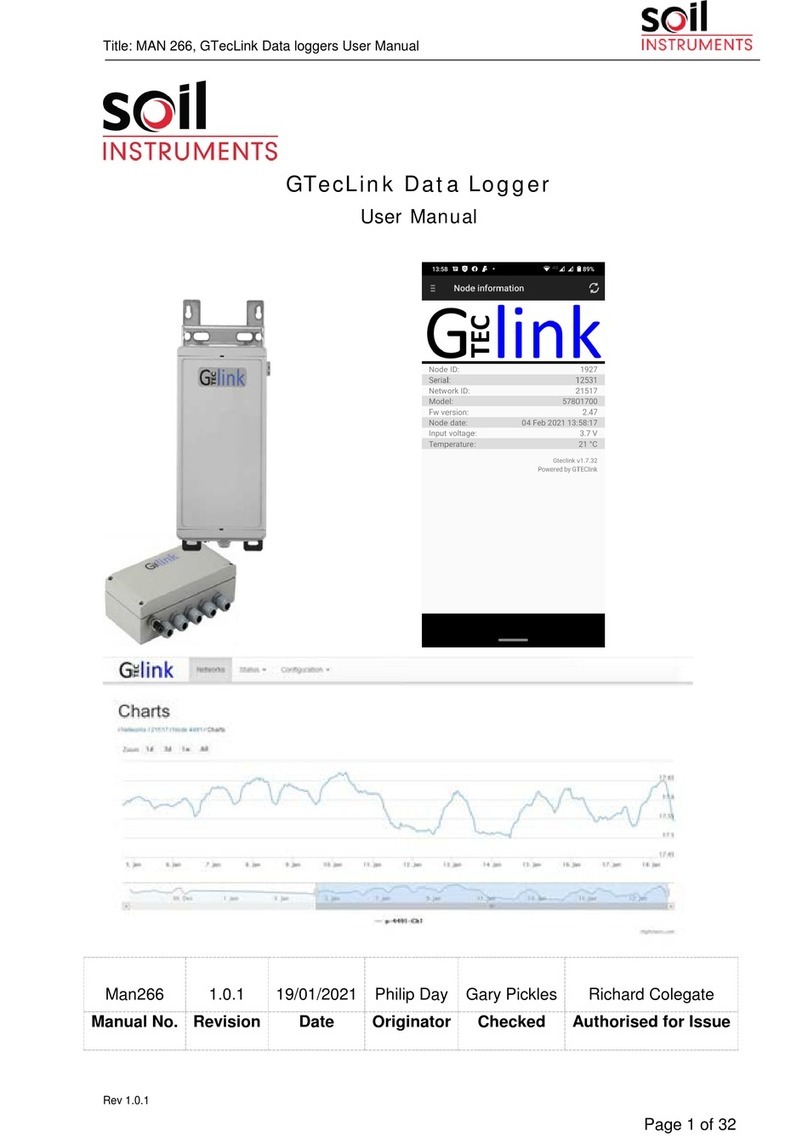
Product Notes
Getting Started
To access the COM Port for the interface cable, unscrew the key-ring end cap. Screw the
end cap onto the data logger until the o-ring cannot be seen, before deploying it.
Submergibility
The TCTemp1000 is fully submergible and is rated IP68. It can be placed in environments
with up to 140 feet (42m) of water.
O-Rings
O-ring maintenance is a key factor when properly caring for the TCTemp1000. The o-rings
ensure a tight seal and prevent liquid from entering the inside of the device.
Please refer to the application note “O-Rings 101: Protecting Your Data”, found on the
MadgeTech website, for information on how to prevent O-ring failure.
Thermocouple Type
To change the thermocouple type in the MadgeTech software:
- Select the Device Menu, then Identify Device and Read Status.
- Select the Device Detail tab, then Thermocouple Type.
- Click on the Change button in the Thermocouple Type window.
- Select the correct thermocouple type from the drop down list.
- Click on the Save button to store the thermocouple type in the device then click OK.
Changing the Thermocouple
- Loosen the dome nut on the cable gland
- Unscrew the large diameter end cover
- Unplug the thermocouple and pull it through the cable gland
- Plug in the new thermocouple and screw the cover back onto the device
- Tighten the dome nut on the cable gland to ensure the device is secure.
Installation Guide
Installing the Interface cable
- IFC200: Insert the device into a USB port. The drivers will install automatically.
- IFC110: Plug the serial cable into the port and verify it is secure.
Installing the software
Insert the Software CD in the CD-ROM Drive. If the autorun does not appear, locate the
drive on the computer and double click on Autorun.exe. Follow the onscreen instructions.
Connecting the data logger
- Once the software is installed and running, plug the interface cable into the data logger.
- Click the Communication Menu, then Auto Configure Port.
- After a moment, a box will appear stating that a device has been found.
- Click OK. The Device Status box will appear. Click OK.
- At this point, communications have been configured for your logger. These settings can
be found under the Communication Menu.
Note: For additional installation instructions refer to your “Data Logger & Software Operating Manual”.
TCTemp1000 Product Quick Reference Card
Device Operation
Starting the data logger
- Click Device Menu then Start Device.
- Choose the desired start method.
- Choose the start parameters by selecting a Reading Rate suitable for your application.
- Enter in any other desired parameters and click Start.
- A box will appear stating the data logger has been started. Click OK.
- Disconnect the data logger from the interface cable and place it in the environment to
measure.
Note: The device will stop recording data when the end of memory is reached or the device is stopped. At this point the device
cannot be restarted until it has been re-armed by the computer.
Downloading data from a data logger
- Connect the data logger to the interface cable.
- Click the Device Menu then Read Device Data. This will offload all recorded data onto
the PC.
Device Maintenance
Battery Replacement
Materials:
Small Needle Nose Pliers
Replacement Battery (TLH-5902)
- Carefully unscrew the sensor end cap and pull the electronics out.
- The battery is the purple cylinder on the circuit board. Gently pull out the old battery.
- Insert the new battery one lead at a time, using pliers to fully push the leads into the
sockets. Note: The battery should be flat against the circuit board, and the positive lead
should be closest to the communications jack.
- Ensure the circuit board is inserted into the white plastic bushing. The sensor cable
should not be twisted, or kinked. From the connection to the circuit board, it should run
up towards the battery, then down to the sensor.
- Insert the electronics back into the tube and carefully screw the cap on.
Recalibration
The TCTemp1000 standard calibration is one point at 25°C for the internal channel and 0mV
for the thermocouple channel.
.
